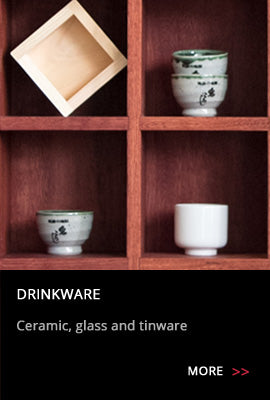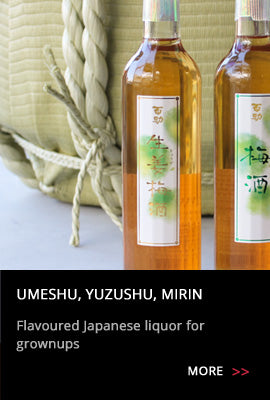
Est. circa 1825 in Kawabe, Gifu, Japan
Hakusen Shuzo was established in the Edo period as a mirin shop in the small town of Kawabe in Gifu prefecture – about 40km north east of Nagoya.
The Kato family brews Japanese sake and mirin using 100% local Gifu rice and the soft water from the subsoil flows of the Hida river - one of the most pristine waterways in Japan. They started brewing sake in 1899. There are 5 family members working in the business.
Hakusen Shuzo’s philosophy is to explore the full power of koji in their sake brewing in order to produce elegant sake. Koji (malted rice) is the key ingredient in sake and mirin brewing and also a key ingredient in other fermented foods.
Sake lists of Michelin stars
Hakusen’s sake can be found on the drinks list of Michelin star restaurants including:
- Kitcho Arashiyama, Kyoto – 3 Michelin Star. Hakusen brews Kitcho’s own brand of superpremium daiginjo sake 'Kitchoteio'
- Seisouka, Tokyo – 2 Michelin Star
- Sakuragawa, Tokyo – 1 Michelin Star
- Tempura Asagi, Tokyo – 1 Michelin Star

Edo period mirin
Hakusen Shuzo are most famous for their mirin which is still brewed to their Edo period recipe.
Used by cult restaurants and bakers:
- Kitcho Arashiyama in Kyoto – 3 Michelin Star – uses their 3 year aged mirin
- Hotel De Mikuni use 3 year aged mirin and Koko mirin
- Waketokuyama, Tokyo – 2 Michelin Star - uses 3 year aged mirin.
- Rokkatei confectionery Co.,Ltd in Hokkaido uses 3 year aged mirin for their 'Daiheigen' baked sweets.
- Kitajima Co.,Ltd in Saga uses 3 year aged mirin for their 'Marubolo' baked sweets.
- Tsukuda Shokuhin Co.,Ltd in Ishikawa use 3 year aged mirin for tsukudani. (Tsukudani are preserved foods simmered in soy based sauce)
About Mirin
The original production methods of mirin were established in the late Edo period using glutinous rice, koji and rice shochu. It was served chilled in summer by cooling bottles in cold water wells.
After World War II, mirin production ceased for three years due to extreme shortages of rice. When mirin brewing resumed the method of brewing changed because rice was still rare in those days. Rice shochu was replaced by cheap alcohol and starch syrup was added to increase volumes.
Cheap fast production mirin is still prevalent today and in its cheaper form, mirin has become a cooking ingredient rather than a beverage.
Hakusen Shuzo are one of few to produce hon-mirin or true mirin in the traditional method.
The Story of Aya
Vice President Yuki Kato studied under Professor Hisayasu Nakata at Tokyo University of Agriculture during 2002 – 2006.
Professor Nakata was researching gathering yeast (Kobo). He had a keen interest in flowers and established a way to extract flower yeast (Hanakobo). Sakura is very special flower for Japanese, so Nakata san wanted to be successful in extracting sakura yeast. He accomplished this after many years labour.
Professor Nakata entrusted the sakura yeast to Yuki Kato to brew delicious sake but there was one condition given by Professor Nakata: It must be locally brewed and enjoyed by the locals at an affordable price. Hence Hakusen’s Hanamikura Aya sake – their table sake - was chosen and in 2012 the yeast changed from No. 9 to the beautiful sakura yeast ‘somei-yoshino’.
We encourage you to try this delicious Aya sake.
The present
Hakusen Shuzo is now in it’s fifth generation under the hands of Takaaki Kato and family. There are 8 kurabito – brewery staff - including toji – master brewer. They produce about 150kL of sake and 300kL of mirin a year.

Chef’s Armoury are the exclusive distributors for Hakusen Shuzo sake and mirin in Australia.
Hanamikura Sake Online
- Hanamikura Aya – the local’s sake – in 720ml and 200ml one-cup
- Hanamikura Fuku - Junmai Daiginjo
- Hanamikura Kuro - Junmai Daiginjo
- Hanamikura Yuzu Nigori - with refreshing yuzu from Kochi prefecture
Fukuraijun Mirin Online
- Fukuraijun 3 year aged mirin – drinking and cooking mirin
- Fukuraijun Ume mirin – ume in 3 year aged mirin
- Fukuraijun Koko mirin – 10 year aged
Hanamikura Shochu Online
- Hanamikura Hanakon Shochu - Honkaku Imo (single distilled sweet potato shochu)
- Hanamikura Daiginjo Kasutori Shochu - Honkaku Kome (single distilled rice shochu)
View Hakusen Shuzo Sake Online
View Hakusen Shuzo Shochu Online
View Hakusen Shuzo Mirin Online





